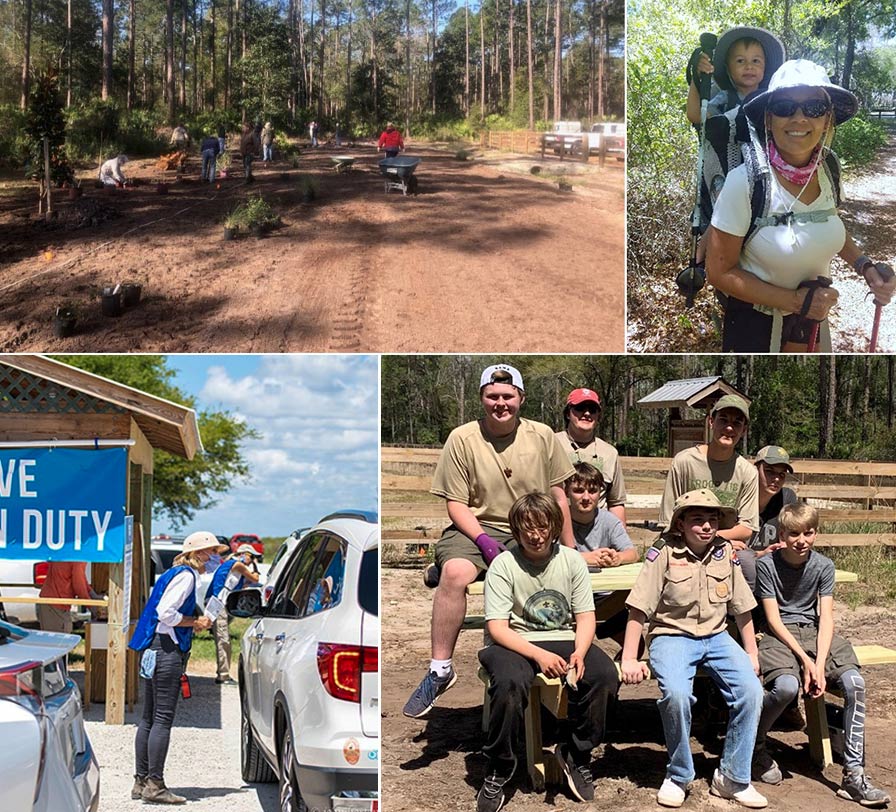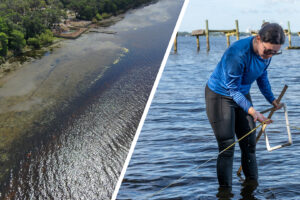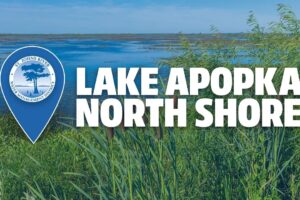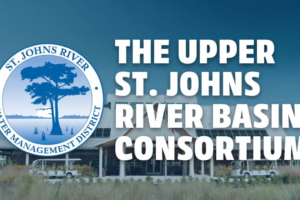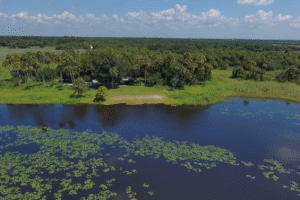Volunteers enhance the District’s public lands
May 20, 2021
The St. Johns River Water Management District owns more than 700,000 acres spread out across 18 counties, with our staff directly managing more than 400,000 acres and the remainder managed by other agencies or local government partners. Most of these lands, purchased for water resource protection and restoration work, are open to the public and offer access to Florida’s natural beauty and countless opportunities for hiking, birding, primitive camping and more.
Along with the District scientists, maintenance crews, land management staff and others who love these lands and are committed to preserving these properties for our water protection work, we also owe thanks to the many volunteers who contribute time and energy to enhancing the visitor experience. From pulling weeds and stocking trail guides to planting trees and monitoring native bird populations, these volunteers deserve our appreciation.
For example, at our Bayard Conservation Area in Clay County, the First Coast Chapter of the Back Country Horsemen helped spruce up a new parking area with native plants, picnic tables and informational kiosk panels. At our Rice Creek property in Putnam County, the Florida Trail Association has maintained hiking foot bridges and campsites along the Florida Trail/Bartram’s Trail running through the property. At Sunnyhill Restoration Area in Marion County, the Altoona Trail Riders have installed mounting blocks, hitching posts and picnic tables at campsites. They also installed picnic tables at the Ocklawaha Prairie property.
Scouts have done volunteer projects at multiple properties. The Boy Scouts replaced the benches at the Heart Island group campsite in Volusia County as an Eagle Scout project. Eagle Scout Dane McGraw and others built and installed bird houses at our Bayard property and others replaced signs at our Stokes Landing property in St. Johns County.
Volunteers also help monitor and document endangered or threatened birds. Cat Lail and her family monitor and photograph eagle nests, Shirley Reilly monitors our scrub-jay population and a group of women, who call themselves “The Scrubbers,” also monitor the threatened Florida scrub-jays at Lake Monroe. For 14 years, Danny Bales has monitored and photographed red-cockaded woodpeckers at 200 cavity tree sites at the Hal Scott Regional Preserve and Park in Orange County, documenting the population growth of these endangered birds (data that also contribute to the annual U.S. Fish and Wildlife Service Population Reports). Eagle Watch volunteer Katie Houvener monitors the 12 active eagle nests at Lake Apopka. Florida Audubon Society’s Jay Watch Program members annually assess statewide population numbers of scrub-jays, doing their work at our Buck Lake (Brevard and Volusia counties) and Lake Monroe (Marion County) conservation areas.
Our 20,000-acre Lake Apopka North Shore property boasts a very active volunteer group. Here, Orange Audubon Society members have contributed thousands of hours to staff “Ambassador Pavilions” to greet visitors to the wildlife drive, explain the rules and give hints for a rewarding visit, answer visitor questions, clean kiosks and distribute trail brochures. The Florida Native Plant Society has partnered with the District for many years in its efforts to rescue endangered, native and unique sandhill plants, helping to restore several acres of sandhill. Volunteers like Dan Cleary help with random projects such as carpentry work, building kiosk structures and benches, assisting with tree plantings, and cleaning up trash.
There is not enough space here to thank every individual and group whose passion for protecting these public lands has led them to give their time and labor so freely. Our most grateful THANK YOU goes out to each of you. Visit one of our public lands (www.sjrwmd.com/lands) to see the benefits of their efforts and learn more about the District’s many water resource projects at www.sjrwmd.com/projects.


